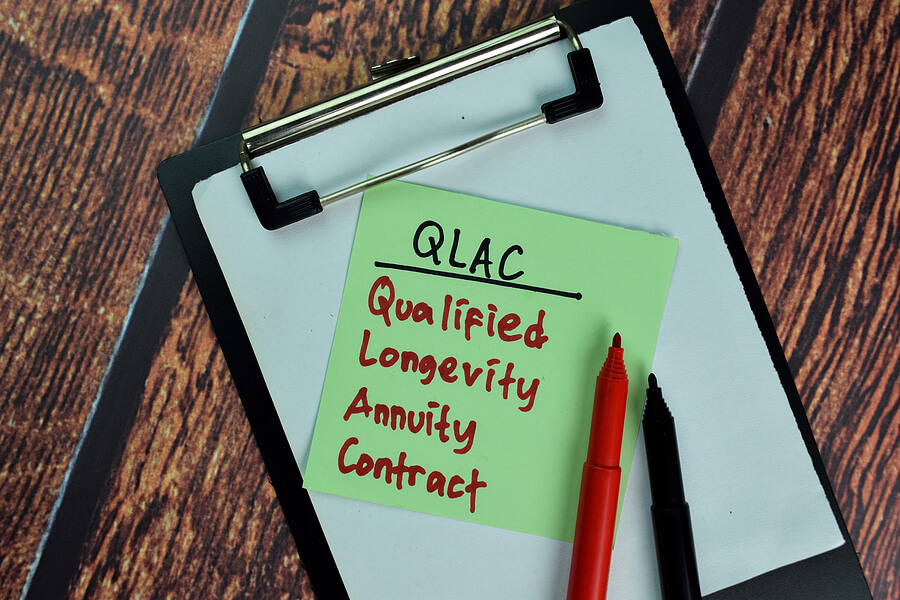Back in the spring, in a rare show of bipartisan action, the House and Senate passed a law intended to give Americans an incentive to save for retirement. The bill received over 400 votes in the House and over 80 in the Senate. The bill, dubbed SECURE 2.0, is a follow-up to the SECURE Act. Last week, Congressional leaders included SECURE 2.0 in the government funding bill. President Biden signed the bill into law yesterday.
Many articles about SECURE 2.0 focus on the provisions that simplify employee enrollment in retirement plans maintained by the employer, raising the age to begin required minimum distributions (“RMD”) to age 75, and many other positive changes.
However, there are few articles about a provision of great importance to Elder Law attorneys – changes to the funding rules of a Qualified Longevity Annuity Contract (“QLAC”) bought in an IRA or qualified plan. There is no change to any other rules or laws governing QLACs.
An article I published in the April/May/June 2016 NAELA News features a more in-depth analysis of QLACs.
A QLAC is an annuity purchased from an insurance company with assets of an IRA. Before SECURE 2.0, the maximum premium for a QLAC could not exceed the lesser of 25% of the account balance or $125,000. The low premium cap severely limited the benefit of the QLAC. Fortunately, SECURE 2.0 removed the percent limitation and raised the maximum premium to $200,000, making QLACs a more attractive strategy.
To qualify as a QLAC, besides the premium limitation, the QLAC must meet these requirements:
- The contract provides that distributions under the contract must begin not later than a specified annuity starting date, that is, by the first day of the month next following the 85th anniversary of the employee’s birth;
- The contract provides that after distributions under the contract begin, those distributions must satisfy the requirements of this section.
- The contract does not provide any commutation benefit, cash surrender right, or other similar feature;
- It provides no benefits under the contract after the death of the employee;
- When issued, the contract must state that the contract is a QLAC;
- The contract is not a variable, indexed, or similar, although a cost-of-living change is allowed.
- The issuing insurance company must file annual reports on the QLAC to the IRS and copy participants.
Using a QLAC provides multiple benefits;
- When buying the QLAC, The account holder can elect to defer the QLAC payments for years but no later than the month after the account holder turns 85 years.
- QLACs do not count when calculating an individual’s RMD, lowering the RMD.
- A QLAC is a Medicaid Compliant annuity. Since a retirement account owns it, it is exempt from the “actuarily sound” requirement under DRA, with the state listed as the beneficiary (but more on that). And since a QLACs cannot be surrendered or reduced to cash, and payments under a QLAC do not begin until age 85, it is not an available resource for Medicaid eligibility until the patient turns 85, even in states that require the complete spend down of IRA to receive benefits.; and
- A QLAC can include various features like a return of premium or a lifetime annuity for a surviving spouse of a disabled child before any repayment to the state. Even if the account owner dies before payments under the QLAC begin, a surviving spouse or disabled child effectively limits a state’s right to recovery.
The changes in SECURE 2.0 make the QLAC an essential tool in protecting retirement accounts from long term care expenses and providing a spousal benefit.
#elderlawyerny #estateplanninglawyer #taxattorney #retirementplanning #specialneeds #inheritance #estate planning #estateplanningattorney #legalneeds #newyorklawyer #longislandelderlaw #longislandestateplanningattorney #taxplanninglawyer #roslynestateplanninglawyer #nassauestateplanninglawyer #elderlawnassau #elderlawnewyork


